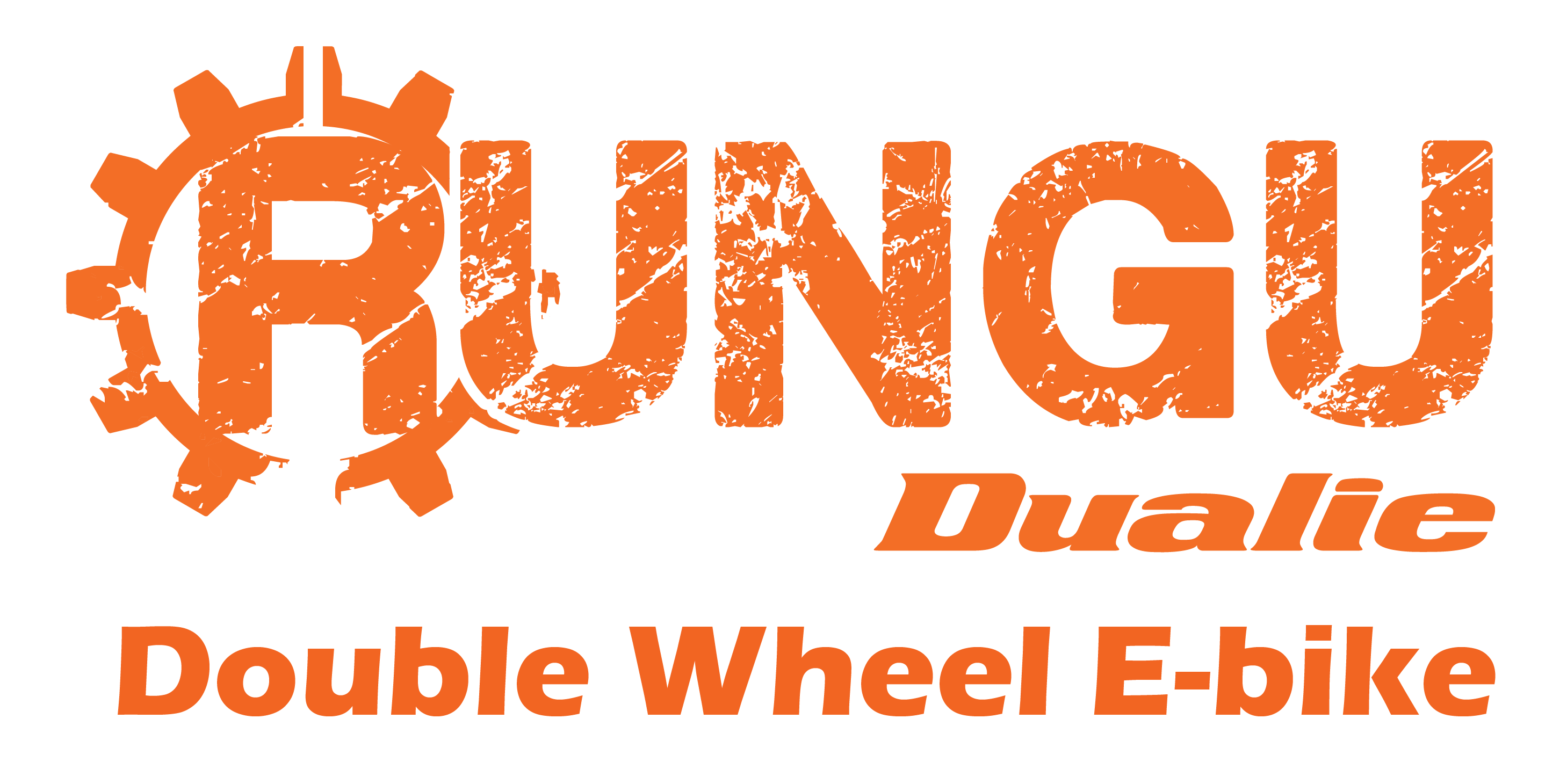E-Bikes: Motor power or bike weight?
E-bike Range and Performance: Rungu Electric Juggernaut is heavy, but does that matter?
Rungu Dualie(R) E-Bikes are heavier than many e-bikes because of the fat tires and extra wheel. On the other hand, Rungu Dualie is much lighter than an ATV and has practically the same capabilities for off-roading. You may assume that the extra weight of a Rungu impacts top speed and range compared to a lighter-weight, lower-power e-bike. We’ll show you why that’s not true.
E-bike weight has less impact on performance than you think!
The weight of a bike has little to do with the power requirements for riding. Why? Bikes usually weigh much less than their rider, making differences in bike weight irrelevant. Physics of riding a bicycle doesn’t change for lighter-weight, lower-power bikes. Consider the example of a 175 lb. rider on two different e-bikes. At 25 mph on a flat dirt road with no wind, the rider needs 990W of mechanical power to propel a 40 lb. e-bike. Double the bike weight to 80 lbs. and now the rider needs 1,108W of mechanical power. 100% more bike weight requires only 12% more power! What about going up hills? Given the same rider going up a 10% grade at 10 mph on dirt, the 40 lb. e-bike needs 706W of power versus 832W of power to propel the 80 lb. e-bike. This time 100% more bike weight needs only 18% more power!
Output power of a mid-drive motor combined with the amount of pedal assist determines the top-speed of each e-bike. If the 40 lb. e-bike in the prior example uses a motor with 350W of mechanical output power, the best unassisted speed the rider can achieve on flat, dirt ground is a little more than 12 mph. Top speed for the same rider on an 80 lb. e-bike with a 1,000W setup is a little over 23 mph. So if you’re looking for speed, motor power is a bigger factor than bike weight.
Battery capacity = Range
Battery capacity is the most important spec to consider when estimating range. If the 40 lb. e-bike uses a 400Wh pack, at 10 mph on dirt, the rider requires 280 Watts of power. Without pedal assist, the rider can cruise at this speed for a little over 14 miles before running out of charge. Riding the heavier bike requires 326 Watts. If the heavier bike (Rungu) uses a 780 Wh pack, the rider gets 24 miles of range on one charge!
Go big, go Rungu, or go home!
With e-bikes, trading light weight for bigger batteries and more powerful motors gets you better range and better speed. Rungu Dualie Double-Wheel E-Bike is heavier, but it uses higher-power motors, better gearing and larger capacity batteries to take you further than lower weight, lower-power e-bikes. If you want to go farther and faster, avoid the lightweight, low-power e-bikes. Get a Rungu!
Still unconvinced? Click on these links to check out our “Ideal” range calculator for e-bikes on the Rungu vs. E-bike page, and then check out Rungu Dualie performance on the MDV specification page .
